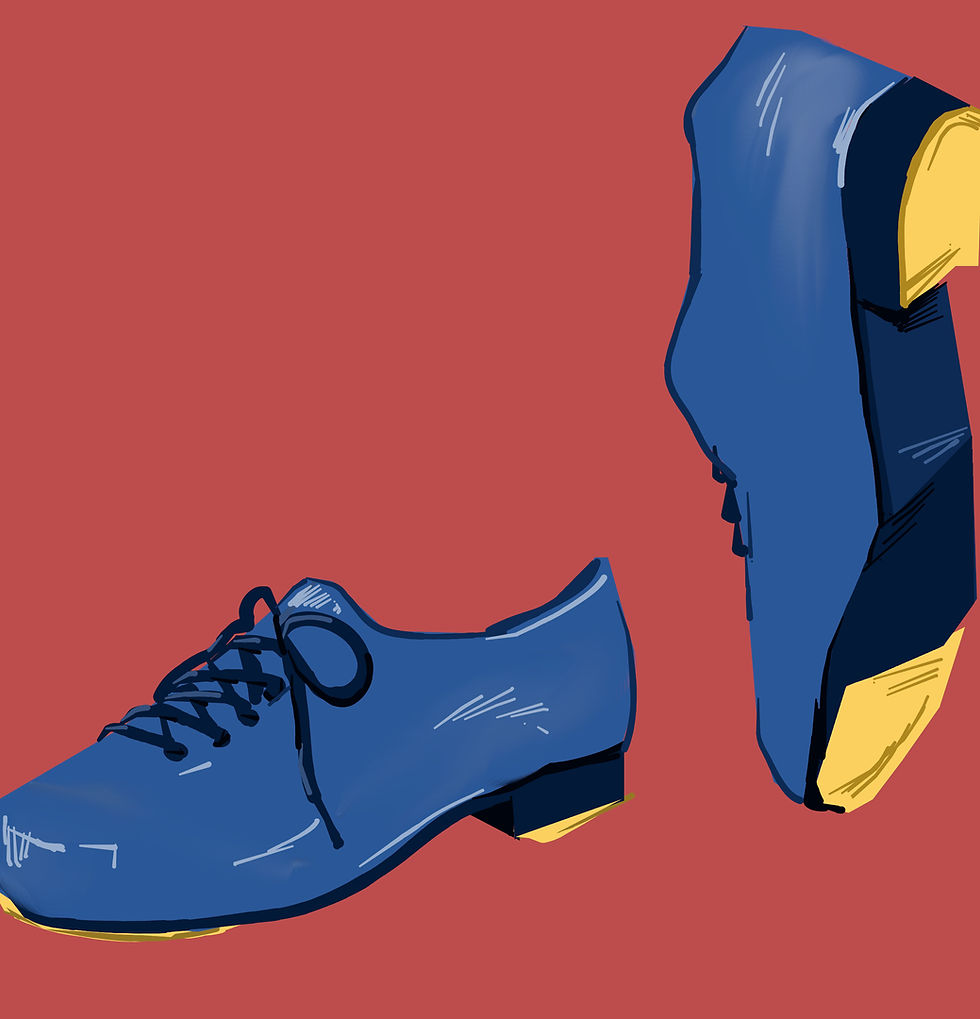A New Era for Barnard Tap
- Eliza Rudalevige

- Apr 30, 2021
- 3 min read
The hiring of a legend promises change for the Barnard dance department.
By Eliza Rudalevige
After a full year of conspicuous and controversial absence from Barnard’s course offerings, tap dance is back in our studios with a new figurehead: Dormeshia, “the queen of tap.” Dormeshia, who has been dancing since the age of three, says that tap chose her, not the other way around. “The studio I would call home (originally called Universal Dance Theatre) was owned by a brother-sister team [Paul and Arlene Kennedy] who were lovers of dance; especially tap dance. I was eight when I started taking tap dance seriously, and twelve when I thought, ‘I want to do this for the rest of my life.’ I never put any parameters on what I’d do as a tap dancer. I just knew that I wanted to tap dance and that I wanted to do it well.”
Over the course of her career, Dormeshia has proven that her success cannot be either measured or constrained. She is an immensely respected tap educator and dancer, a recipient of both an Astaire and a Bessie award, a Broadway dancer since the age of thirteen, and the former personal tap coach of Michael Jackson.
Dormeshia’s appointment comes hot on the metal-clad heels of Barnard’s decision not to renew Margaret Morrison’s contract. At the time, Morrison was the Dance Department’s sole tap instructor, so the decision rocked the Columbia/Barnard tap community. Dancers and teachers alike questioned the motives of removing one of the department’s only historically Black art forms, especially in the midst of Black Lives Matter protests and the Barnard administration’s claims of commitment to combating racism. In a now-deleted open letter to Dean of Dance Paul Scolieri, Morrison detailed her disappointment in the department’s liquidation of the tap program, writing, “The [Tap] History course is one of the few in the department to teach the legacy of minstrelsy and anti-Black stereotypes and to address complex issues of race, gender, resistance, and stylistic innovation in American popular performance history.”
Kelly Peterson, BC ’23, the space coordinator of the campus tap group UnTapped, a self-proclaimed Dormeshia fan, and a former student of Professor Morrison, told me that she learned about Dormeshia’s work in Morrison’s class last spring. Peterson, who has been tapping since she was 10 and loves its “percussive element,” is excited to take Tap III with Dormeshia this summer, but mourns the loss of Morrison’s class, Tap as an American Art Form.

“I and other members of UnTapped … were all incredibly disappointed last spring when we found out Professor Morrison was no longer going to be teaching at Barnard,” Peterson said. “I was really worried that I wouldn’t ever be able to take another tap class at Barnard again.” Peterson added that Morrison’s course was unique in that it offered both a lecture and technique element, and that “being able to understand the history behind the steps we were practicing made it so much more interesting.” Course listings on Vergil suggest that a tap history class will no longer be offered, at least in the coming summer and fall terms.
In addition to Dormeshia’s Tap I and Tap III, Barnard is offering a new lecture course, Dance in Africa, taught by new instructor Dr. Cécile Feza Bushidi. Although Barnard’s dance department has shown promising initiative with the introduction of these new dance courses rooted in Black history and taught by Black faculty, the foundations of the curriculum remain decidedly Eurocentric. The modern and ballet programs boast six levels each, yet Barnard only offers three levels each of jazz and tap, two of African dance, and one each of classical Indian and Afro-Cuban styles. On Vergil, an intermediate level of modern and ballet are listed as prerequisites for the beginner jazz course, in which lecturer Katiti King utilizes movement approaches of African, Afro-Carribean, East Indian, and Latin influence. For Tap I, the Dance Department website lists “Experience in any dance or movement form” as a requirement—the beginner levels of ballet and modern have no prerequisites at all. These requirements corroborate the narrative that modern and ballet are foundational, while other classes are not, and act as roadblocks for beginners who are looking to study more diverse styles.
Dormeshia ended our conversation with a thought: “Tap dance is as serious an art form as modern and ballet, but still has yet to be taken seriously at the college level. Some colleges offer tap as an elective. Others have student-run tap clubs or they have a tap class for the musical theater department. But it would be nice to see more extensive tap dance programs that focus on technique, improvisation, composition, the history of this amazing art form, as well as business and entrepreneurship.” The underlying problem, that collegiate tap is often overlooked in favor of styles that are historically exclusionary to BIPOC dancers, won’t be solved by adding a few classes, but it’s certainly a good start.


